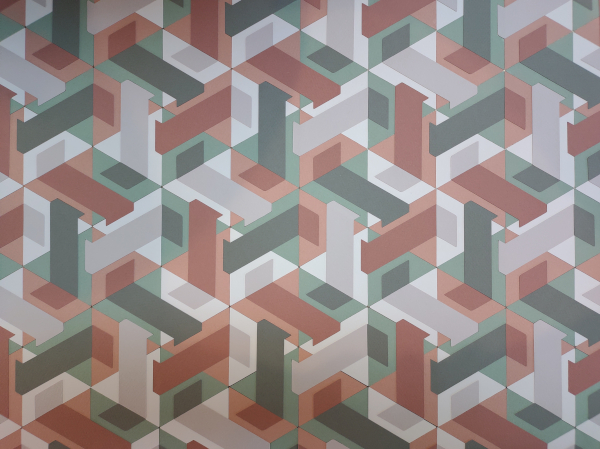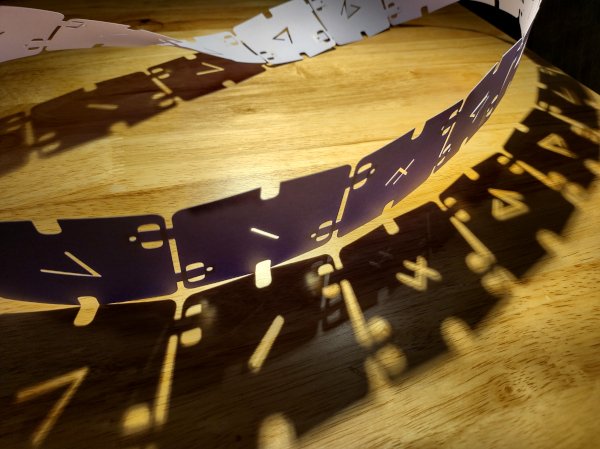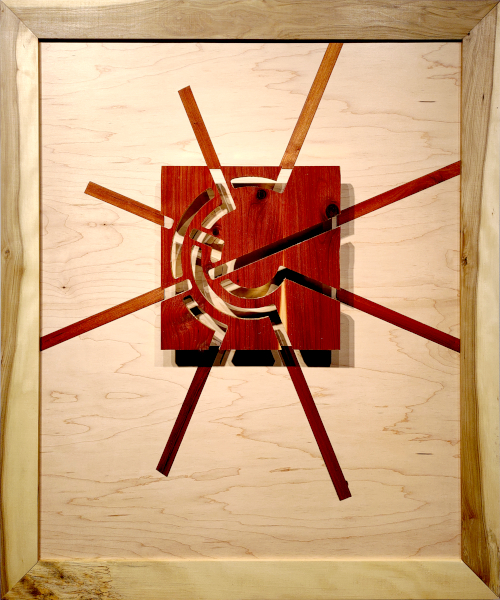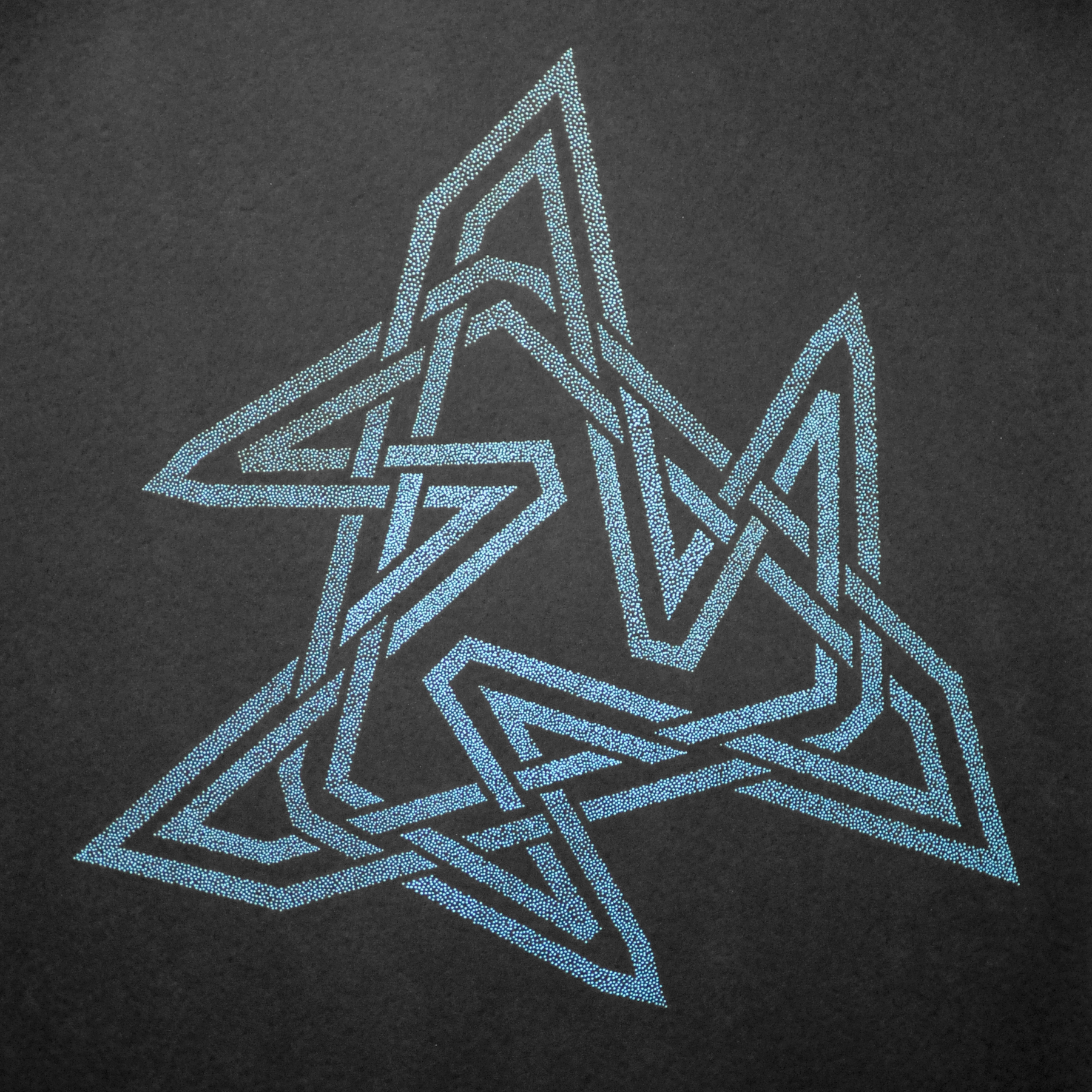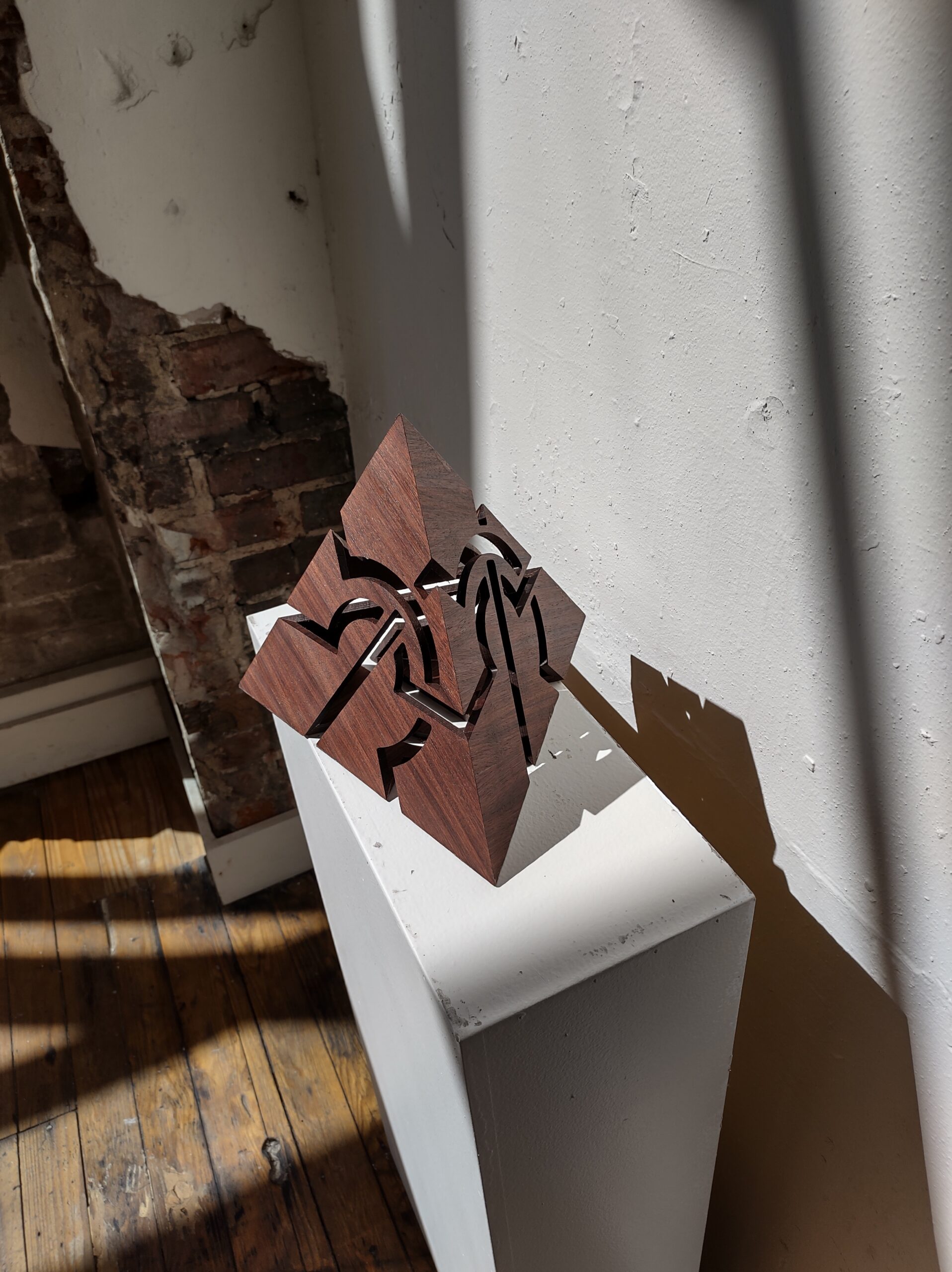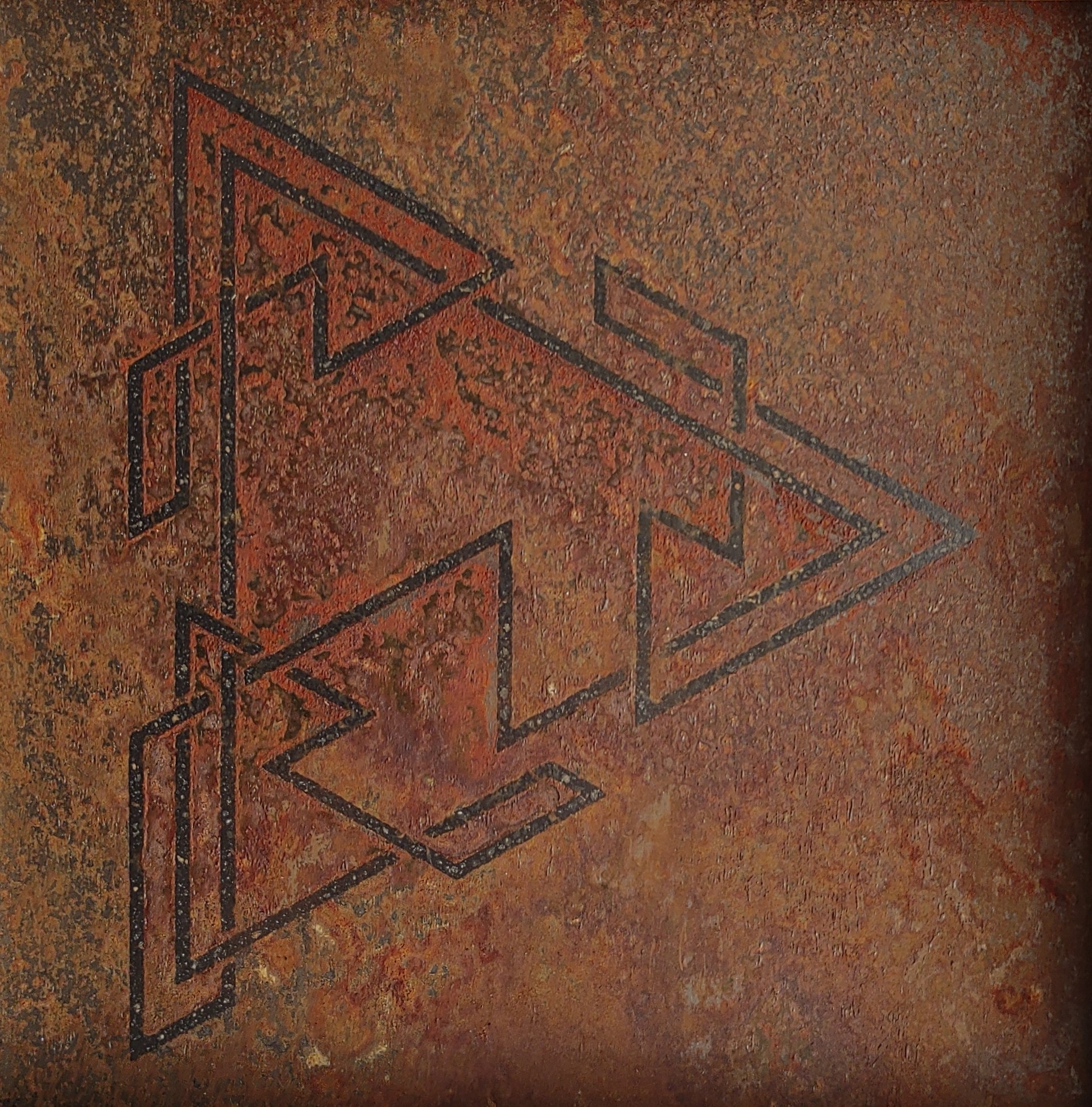Category: partial dimensions
-
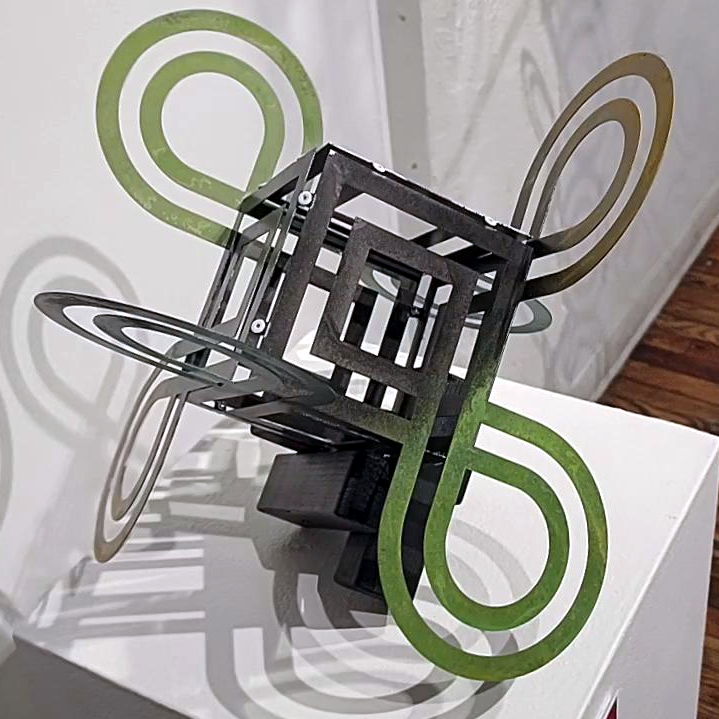
negative single twist components
A helix and a hexahedron are both composed from a single component, a negative single twist knot.
-

branching unknot
Two unknots are arranged vertically above a charred wood base. The shape of the metal makes self-supporting convex and concave arrangements possible.
-

woven tile hexahedron
Copies of a single metal tile are woven together to form a cube with a concave vertex.
-

isometric hex knot
Outlined knot segments are inlaid with copper wire. Each segment follows a path which eventually returns to its origin.
-

projected isometric tercet knot
This is a double-lined, triple-component knot based on an isometric grid. The rules of knot making are slightly bent with the double line, but half the fun of making your own system is breaking its rules. It is “projected” is because its construction uses small wooden dowels to lift the individual pieces above the surface.…

